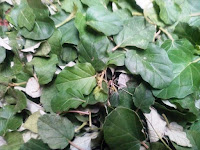Hi Friends!!
My next recipe is a Andhra speciality dish... it is much spicy compared to earlier dishes that I have prepared.
My next recipe is a Andhra speciality dish... it is much spicy compared to earlier dishes that I have prepared.
Gutti
Vonkaya Kura is an authentic Andhra Recipe made with small Brinjals stuffed
and cooked with some spices. Any way I got this recipe from a magazine... I also checked with one of my friends who is a Telugu.. I thought let me try this out too... :)
 |
| Vonkaya curry final |
Ingredients
- Cinnamon - 1 stalk
- Cloves - 8nos
- Cardamoms - 5 nos
- Green chillies - 3 nos, chopped
- Cumin seeds - 1 teaspoon
- Garlic - 1 tsp
- Mustard seeds - 1 tsp
- Turmeric powder - 1 tsp
- CuminPowder - 1 tsp
- Chilly powder - 2 tsp
- Curry leaves -10-12 nos
- Coriander powder - 3 tsp
- Coconut paste - 1 cup
- Tamarind - 2 tbsp
- Coriander leaves to garnish
- Salt to taste
1. Take a pan
and deep fry the brinjals. Keep aside.
2. Chop the onions and tomatoes and keep aside.
2. Chop the onions and tomatoes and keep aside.
4. Take a
pan and pour 4-5 tablespoons of oil. Add Cardamoms, Cloves and Cinnamons and sauté.
 5. Then add
the green chillies, Cumin, Mustard seeds and garlic. Once
the Garlic becomes brownish, add the chopped onions.
5. Then add
the green chillies, Cumin, Mustard seeds and garlic. Once
the Garlic becomes brownish, add the chopped onions.
6. Add the
curry leaves and turmeric powder. Mix and saute these for some time.
6. Add the
tomatoes and let it to sauté for some time.
 |
| boiling gravy |
7. Add the
red chilly powder, Coriander powder, and cumin powder.
8. Add the
coconut paste and put salt and mix it
well.
9. Once the
masala gets cooked and reaches a slightly dry consistency add some tamarind
extract.
 |
| Add the brinjal in the gravy |
11. Now add the fried brinjals into the gravy. Allow it to simmer for 5 minutes till the gravy becomes a bit think and consistent.
Garnish with
coriander leaves… Gutti Vonkaya Kura is ready!!







































